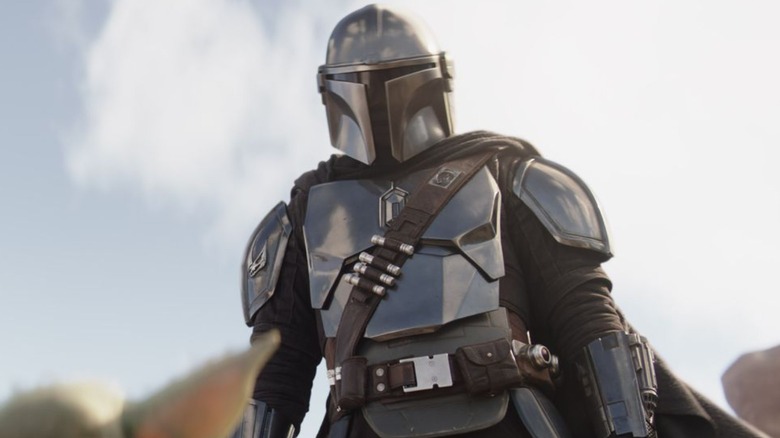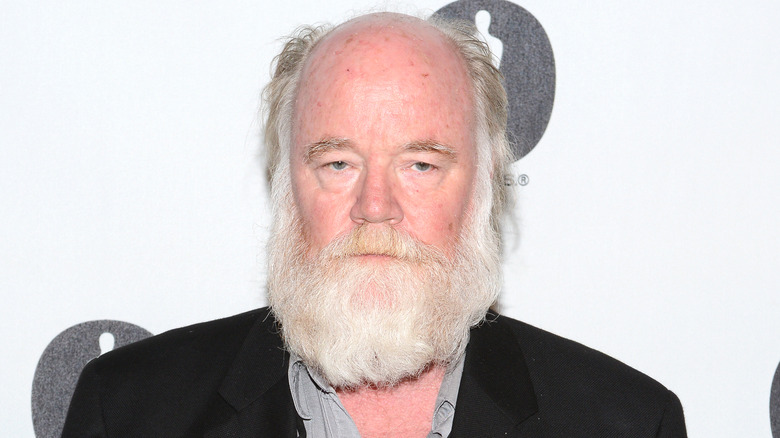The Mandalorian S3 Tapped A Legendary Designer To Create Mandalore
Though it has appeared in "Star Wars" media numerous times before, Mandalore finally takes the live-action spotlight properly during "The Mandalorian" Season 3. Din Djarin (Pedro Pascal) and Bo-Katan Kryze (Katee Sackhoff) make it their mission to unite the clans of Mandalorians scattered throughout the galaxy to take their war-torn homeworld back from the Imperial remnant secretly stationed there. As it turns out, to bring the popular planet to life on the Disney+ series, the folks at Lucasfilm looked to a legendary designer who's no stranger to the "Star Wars" universe: Phil Tippett.
Tippett worked closely alongside George Lucas on previous "Star Wars" productions, helping to bring the galaxy far, far away to life at the movies. "We thought Phil would be great to collaborate with on what Mandalore would look like, to create something that was both tech and nightmarish," "Mandalorian" mastermind Jon Favreau explained (via Star Wars on YouTube). Using his models, the "Mandalorian" team used photogrammetry to bring Tippett's environments into the Volume and into CGI form.
Thus, with Tippett's input, "The Mandalorian" gave fans an unsettling yet fascinating look at Mandalore. It's no surprise that Tippett delivered the goods, though, bearing in mind his "Star Wars" track record.
Tippett is an undeniable Star Wars legend
Phil Tippett's work on the "Star Wars" franchise dates back to its beginning in 1977 when he helped out with puppeteering and stop-motion work on "Star Wars: Episode IV – A New Hope." He also took on the uncredited background role of Mos Eisley Cantina patron Myo in the groundbreaking feature. Three years later, he contributed to the long-awaited sequel, "Star Wars: Episode V – The Empire Strikes Back." He famously did miniature work, makeup sculpting, and optical effects for the film and led the stop-motion animation process for everything from the Imperial AT-AT walkers to the tauntauns of Hoth.
Tippett really hit his stride with "Star Wars" in 1983 for "Star Wars: Episode VI – Return of the Jedi." In addition to puppeteering the imposing Rancor, he took the reins of Lucasfilm's creature shop, contributing to the many alien creatures seen in locales like Jabba's Palace, for instance. Not only did he give fans some of the most memorable movie aliens of all time, but he, Richard Edlund, Dennis Muren, and Ken Ralston earned the Special Achievement Award for Visual Effects at the 56th Academy Awards for their efforts. Tippet also helped out on "Star Wars: Episode VII – The Force Awakens" and the second season of "The Mandalorian."
With a résumé like that, it's plain to see why Jon Favreau reached out to Phil Tippett to get his help with designing Mandalore.

